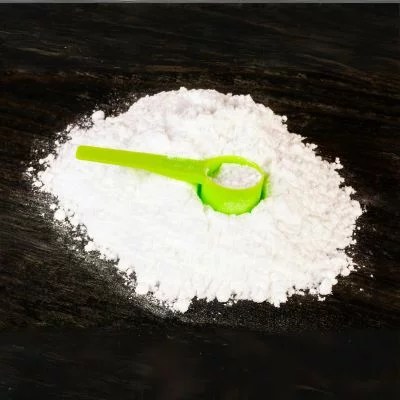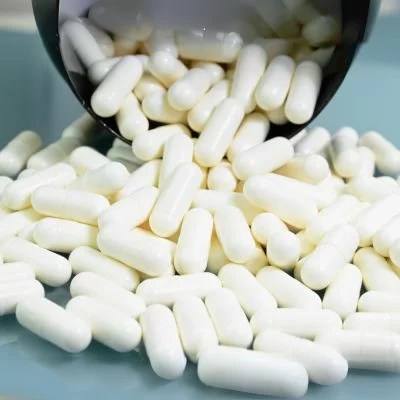Unveiling the Origins of Creatine: A Comprehensive Exploration
Welcome to the Super Achiever Club, the nexus of self-improvement where we empower free-thinking individuals with knowledge across various domains, including health, wealth, and social dynamics. Today, we embark on a fascinating journey into the realm of health and fitness as we delve into the enigmatic world of creatine.
Contents
Creatine is a captivating compound that has piqued the curiosity of fitness enthusiasts and health-conscious individuals for years. To understand where creatine comes from, we must first unravel the mysteries surrounding this essential substance.
Defining Creatine: Unraveling the Mysteries

What is Creatine?
Creatine is not just a buzzword in the fitness world; it’s a fundamental molecule intricately woven into the fabric of our biology. At its core, creatine is a nitrogenous organic compound that plays a pivotal role in the energy metabolism of cells, particularly in high-intensity, short-duration activities like weightlifting and sprinting.
This remarkable substance is found predominantly in muscle tissue, where it serves as a reservoir for quick energy. It does so by facilitating the rapid regeneration of adenosine triphosphate (ATP), the primary energy currency of our cells. When muscles contract, ATP is consumed, and creatine steps in to swiftly replenish it, allowing for sustained bursts of power.
Is Creatine an Amino Acid?
No, creatine is not an amino acid, but its molecular structure bears some resemblance to amino acids, which are the building blocks of proteins. Amino acids contain both an amine group (NH2) and a carboxyl group (COOH), while creatine lacks the carboxyl group. Instead, creatine consists of three amino acids—arginine, glycine, and methionine—bonded together in a distinct arrangement.
This distinction is vital because amino acids primarily serve as the building blocks of proteins, whereas creatine is primarily involved in energy production. However, creatine is synthesized within the body, primarily in the liver and kidneys, utilizing amino acids as its precursors.
As we continue our exploration into the origins of creatine, we will delve deeper into its sources and how it is synthesized within the human body. Join us on this illuminating journey as we uncover the secrets of creatine’s existence.
Learn more about Tongkat Ali vs. Creatine
Stay tuned for the upcoming segments, where we will explore the dietary sources of creatine and its role in our biological systems.
The Genesis of Creatine

In our quest to understand the origins of creatine, we must delve into its fascinating genesis and composition. Creatine, a compound that holds the key to enhancing physical performance, is indeed an intriguing subject.
Origins and Composition: Deciphering the Building Blocks
Creatine is not a complex molecule, but its role in our physiology is nothing short of extraordinary. To comprehend where creatine comes from, we must first grasp what it is made up of.
What is Creatine Made Up Of?
Creatine is composed of three essential amino acids: arginine, glycine, and methionine. These amino acids are the fundamental building blocks of proteins, and when combined in a specific arrangement, they give birth to creatine. This intriguing amalgamation takes place primarily in our liver and kidneys, where these amino acids come together, forming the precursor molecules that eventually become creatine.
Where Does Creatine Come From?
Now that we understand the components of creatine, it’s time to explore where it originates. Creatine exists in two primary forms within our bodies—endogenously synthesized creatine and exogenously obtained creatine.
- Endogenous Creatine Synthesis: Our body is a remarkable factory capable of producing creatine on its own. The liver and kidneys play a pivotal role in this endogenous synthesis. These organs combine the amino acids mentioned earlier to create creatine, ensuring that our cells always have access to this vital energy source.
- Exogenous Creatine Sources: While our bodies can produce creatine, we also obtain it from dietary sources. Consuming creatine-rich foods like meat and fish can contribute to our creatine stores. Additionally, many individuals choose to supplement with creatine to enhance their athletic performance and overall well-being.
As we continue our journey through the world of creatine, it’s important to note that while endogenous synthesis meets our basic needs, supplementation can provide an extra boost, particularly for athletes and fitness enthusiasts.

Natural Sources of Creatine
In our pursuit of knowledge about creatine, it’s essential to uncover its natural sources and understand where this powerhouse compound comes from. Creatine isn’t just a product of supplementation; it’s readily available in various forms through the foods we consume.
Dietary Sources: Nourishing the Body
Creatine-rich foods are a boon for those looking to maintain optimal creatine levels. These sources provide a natural means of nourishing our bodies with this vital compound.
- Meat: Meat, especially lean cuts like beef and pork, is a well-known source of creatine. In fact, red meat contains higher concentrations of creatine compared to other types of meat. A single serving of cooked beef can provide approximately 1 gram of creatine, making it a significant contributor to our dietary intake.
- Fish: Fish, particularly salmon and tuna, is another excellent source of creatine. Not only are they rich in healthy omega-3 fatty acids, but they also pack a creatine punch. A serving of cooked salmon can contain around 0,5-1 grams of creatine.
- Poultry: While not as abundant as red meat or fish, poultry such as chicken and turkey still contains notable amounts of creatine. It’s a leaner option for those watching their fat intake while ensuring a moderate creatine supply.
- Vegetarian Options: For those following a vegetarian or vegan diet, creatine can still be obtained from sources like beans, nuts, and seeds. While these plant-based sources may not provide as much creatine as animal products, they can contribute to overall creatine intake.
Biosynthesis: The Body’s Creative Factory
Beyond dietary sources, our bodies possess an incredible ability to produce creatine endogenously. This internal creative factory primarily operates in the liver and kidneys.
Creatine biosynthesis involves the conversion of the amino acids arginine, glycine, and methionine into creatine. This process ensures a constant supply of creatine to meet the body’s demands, especially during periods of increased physical activity.
Where Does Creatine Come From in the Body?
To further unravel the origins of creatine, it’s essential to explore where it resides within our bodies. The majority of creatine (approximately 95%) is found in our muscles, where it’s stored as creatine phosphate.
Creatine phosphate acts as a rapid and efficient energy source during high-intensity, short-duration activities like weightlifting and sprinting. When muscles contract, they rely on the immediate energy provided by ATP (adenosine triphosphate). Creatine phosphate steps in to quickly regenerate ATP, ensuring that muscles can sustain their performance during these bursts of activity.

As we continue our journey through the world of creatine, we will delve deeper into its role in enhancing physical performance and its significance for athletes and fitness enthusiasts. Stay tuned for more insights into this remarkable compound.
Learn more about the Best Creatine Pills and Capsules
Join us in exploring the various facets of creatine, its benefits, and its impact on health and fitness.
The Role of Creatine
In the ever-evolving landscape of health and fitness, creatine stands as a prominent figure, celebrated for its biological significance that extends far beyond mere supplementation. As we delve deeper into the world of creatine, we unveil its multifaceted role and the intriguing question: What is creatine for, and what does it exist within?
Biological Significance: Beyond Mere Supplementation
Creatine is not merely a supplement; it’s a naturally occurring compound deeply ingrained in the machinery of our cells. Its biological significance transcends the world of bodybuilding and athletic performance. Creatine’s primary role lies in providing rapid energy to cells, particularly during high-intensity, short-duration activities.
By facilitating the quick regeneration of adenosine triphosphate (ATP), creatine ensures that our muscles have access to the energy they need to perform optimally. This function is not limited to the realms of weightlifting or sprinting but extends to everyday activities, allowing us to function at our best.
What is Creatine For?

Creatine serves as a fundamental energy buffer, allowing muscles to perform beyond their normal capacity. This not only enhances physical performance but also aids in muscle recovery. Athletes and fitness enthusiasts often turn to creatine supplementation to gain that extra edge during their training sessions.
Beyond performance enhancement, creatine has shown promise in various clinical applications. Research suggests that creatine supplementation may benefit individuals with neurological conditions, such as Parkinson’s disease and Alzheimer’s disease. It has also demonstrated potential in improving muscle function in certain neuromuscular disorders.
What is Creatine In?
To understand the full scope of creatine’s role, we must explore where it exists within our bodies. As mentioned earlier, approximately 95% of the body’s creatine is stored in muscle tissue in the form of creatine phosphate.
Creatine phosphate serves as a rapid energy reserve, ready to spring into action when muscles demand quick bursts of power. Whether you’re lifting weights, sprinting, or even climbing stairs, creatine phosphate is there to ensure your muscles have the energy they need.
Creatine’s presence is not limited to muscles; it also resides in smaller quantities in various other tissues, including the brain and heart. While its role in these tissues is still under investigation, it hints at the far-reaching impact of this remarkable compound.
Learn more about Creatine Benefits

Personal Opinion & Experiences
Creatine is everywhere. It’s a natural source of energy produced by our bodies or consumed by eating animals. And it’s for sure one of the most effective ways to supplement your body for peak performance with minimal risk.
– Felix Hesse (Founder of SAC)
Finding the Best Creatine for You
So now you know where creatine comes from. But have you found the best creatine to fit your personal needs already? This is not an easy task to do. And that’s why we created specific guides for different forms & all your needs:
| Best Creatine Supplement | Best Creatine for Men |
| Best Creatine Brand | Best Creatine for Women |
| Best Creatine Monohydrate (Powder) | Best Creatine for Muscle Growth & Bodybuilding |
| Best Creatine Powder | Best Creatine for Teens |
| Best Creatine Pills & Capsules | Best Creatine for Bulking & Weight Gain |
| Best Creatine Gummies | Best Creatine for Athletes |
| Best Creatine HCL | Best Creatine for Beginners |
| Best Creatine Creapure | Best Creatine for Weight Loss & Cutting |
| Best Vegan Creatine | Best Creatine for Glute Growth |
| Where to Buy Creatine | Best Creatine for Older Adults |
The Science Behind It
Whenever possible we base our articles on scientific research & studies on Creatine.
Want to know more about it? Visit our dedicated page:


Conclusion
In the realm of health, fitness, and self-improvement, the enigmatic compound known as creatine has proven itself to be a true titan. As we conclude our journey through the multifaceted world of creatine, we find ourselves in awe of its origins, purpose, and profound impact on the human body.
The Multifaceted World of Creatine: A Vital Compound with Origins and Purpose
Creatine, once shrouded in mystery, now stands as a beacon of scientific understanding and practical application. From its dietary sources to endogenous synthesis, we’ve unraveled the origins of creatine, discovering its presence in the foods we eat and the creative factory within our bodies.
But creatine is not merely a passive passenger on our health journey. It plays a dynamic role that extends far beyond mere supplementation. Creatine is the guardian of rapid energy, the buffer against fatigue, and the catalyst for performance enhancement. Whether you’re an athlete striving for excellence or an individual seeking improved vitality in everyday life, creatine offers a helping hand.
Join the Super Achiever Club
As members of the Super Achiever Club, our mission is clear: to empower free-thinking individuals with the knowledge they need to become super achievers and make the world a better place. In the fields of health, wealth, and social dynamics, we strive to illuminate the path to self-improvement and success.
Our exploration of creatine is just one example of the transformative insights we provide. From understanding the best forms of creatine supplementation to uncovering its benefits and debunking myths, we’re here to guide you every step of the way.

So, whether you’re a fitness enthusiast seeking to maximize your gains or someone on a journey to enhance your overall well-being, remember that knowledge is your greatest ally. Stay curious, stay informed, and join us in our quest to become super achievers.
Together, we’ll continue to unlock the secrets of self-improvement and pave the way for a brighter future.



